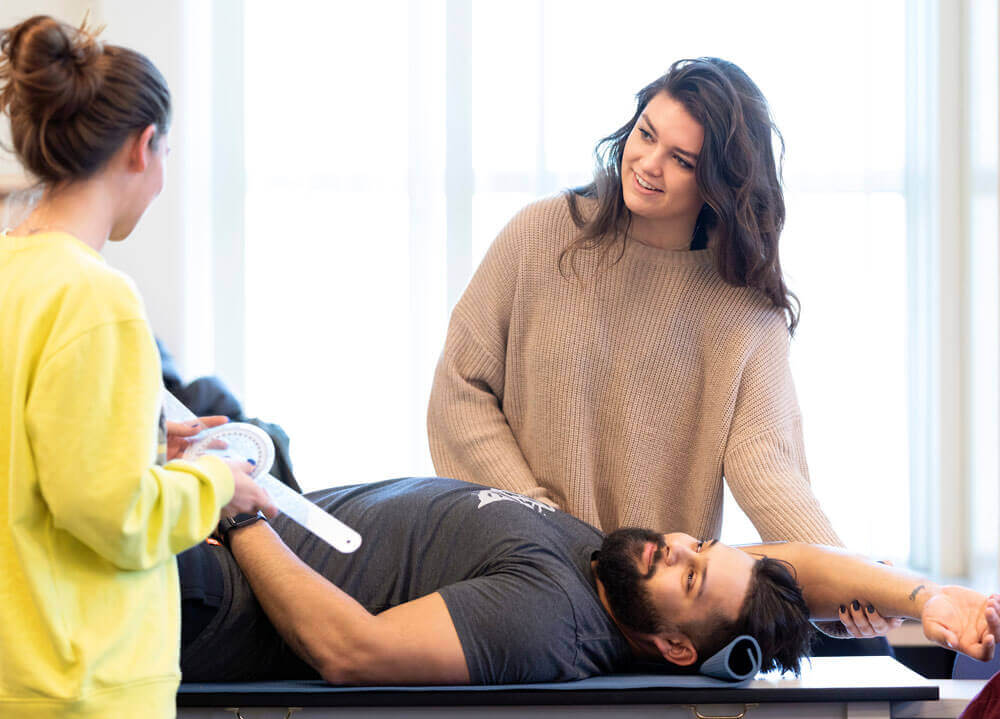
The athletic training program is no longer accepting new applications.


The athletic training program is no longer accepting new applications.

Athletic trainers work with all types of patients to prevent and treat injuries, from football and field hockey players to baseball, basketball and ice hockey players — and more. But fields, courts and rinks aren't the only places you'll see athletic trainers in action. In the arts, you might discover an athletic trainer backstage icing a dancer’s injury while discussing a rehabilitation protocol. You might also find an athletic trainer helping Navy SEALs with intense conditioning drills on a military base.
Our athletic training program emphasizes practical clinical experience along with a strong foundation in anatomy and physiology, fitness and conditioning, nutrition and other areas within the health sciences. You’ll work with student-athletes from Quinnipiac’s 21 Division I sports programs as well as athletes in local high schools and patients in community-based health care settings, all under the supervision of certified athletic trainers.
After earning your bachelor’s degree, you'll have the option of continuing your education at Quinnipiac with a doctor of physical therapy degree. Our students have completed internships around the country with such organizations as the NFL's New York Giants, the University of Tennessee, the U.S. Department of Veterans Affairs and many others.
Our graduates are either working or enrolled in a secondary education program six months after graduation (2022 Graduates from Quinnipiac Survey)
Jobs for athletic training graduates are forecast to increase by 19% from 2018-2028 (U.S. Bureau of Labor Statistics, 2018)
First-time pass rate for licensure exam compared to the national average of 80.8% (2019 pass rate data)
| Year | 2020-2021 | 2019-2020 | 2018-2019 |
|---|---|---|---|
| Number of students graduating from the program | 22 | 14 | 15 |
| Student graduation rate | 76% | 70% | 58% |
| Measurement Criteria | Aggregate Total |
|---|---|
| Graduated Students | 51 |
| Graduation Rate | 68% |
| Year | 2020-2021 | 2019-2020 | 2018-2019 |
|---|---|---|---|
| Number of students employed as AT | 12 | 14 | 14 |
| Student employment / placement rate as AT | 55% | 100% | 93% |
| Number of students employed as other | 4 | 0 | 1 |
| Student employment / placement rate as other | 18% | 0% | 7% |
| Number of students not employed | 6 | 0 | 0 |
| Student not employed rate | 27% | 0% | 0% |
| Measurement Criteria | Aggregate Total |
|---|---|
| Number of students employed as AT | 40 |
| Student employment / placement rate as AT | 78% |
| Number of students employed as other | 5 |
| Student employment / placement rate as other | 10% |
| Number of students not employed | 6 |
| Student not employed rate | 12% |
| Year | 2020-2021 | 2019-2020 | 2018-2019 |
|---|---|---|---|
| Number of students who started professional phase | 29 | 20 | 26 |
| Number of students who returned for year 2 | 26 | 19 | 21 |
| Percentage of students who returned for year 2 | 90% | 95% | 81% |
| Number of students who returned for year 3 | 24 | 14 | 15 |
| Percentage of students who returned for year 3 | 83% | 70% | 58% |
| Number of students who graduated | 22 (2 in progress) | 14 | 15 |
| Percentage of students who graduated | 76% | 70% | 58% |
| Measurement Criteria | Aggregate Total |
|---|---|
| Number of students who started professional phase | 75 |
| Number of students who returned for year 2 | 66 |
| Percentage of students who returned for year 2 | 88% |
| Number of students who returned for year 3 | 53 |
| Percentage of students who returned for year 3 | 71% |
| Number of students who graduated | 51 |
| Percentage of students who graduated | 60% |
| Year | 2020-2021 | 2019-2020 | 2018-2019 |
|---|---|---|---|
| Number of students graduating from program | 22 | 14 | 15 |
| Number of graduates who took exam | 22 | 14 | 15 |
| Number of students who passed the exam on the first attempt | 21 | 14 | 13 |
| Percentage of students who passed the exam on the first attempt | 95% | 100% | 87% |
| Number of students who passed the exam regardless of the number of attempts | 21 | 14 | 14 |
| Percentage of students who passed the exam regardless of the number of attempts | 95% | 100% | 93% |
| Measurement Criteria | Aggregate Total |
|---|---|
| Number of students graduating from program | 51 |
| Number of graduates who took exam | 51 |
| Number of students who passed the exam on the first attempt | 48 |
| Percentage of students who passed the exam on the first attempt | 94% |
| Number of students who passed the exam regardless of the number of attempts | 49 |
| Percentage of students who passed the exam regardless of the number of attempts | 96% |
The athletic training program at Quinnipiac is both rigorous and intense. The program places specific requirements and demands on the students enrolled in it. A primary objective of the program is to prepare graduates to work in a variety of settings and to provide deliberate, responsible care to a wide range of individuals.
The technical standards set forth by the athletic training program establish the necessary qualities for students to gain the knowledge, skills and competencies of an entry-level athletic trainer. The program is also designed to help students meet the accreditation requirements of the Commission on Accreditation of Athletic Training Education (CAATE).
All students admitted to the program must satisfy the established abilities and expectations. In the event a student is unable to fulfill these technical standards, with or without reasonable accommodation, the student will not be admitted or may be dismissed from the program.
Candidates for selection to the program will be required to verify they understand and meet the technical standards, or they believe that, with certain reasonable accommodations, the technical standards can be met. Verification of this understanding includes the student reading, signing and returning a copy of the technical standards agreement to the ATSM program director during the first year.
A listing of the technical standards and an agreement form for the athletic training program at Quinnipiac can be found below.
Our undergraduate admissions counselors are here to answer any questions you may have and help you navigate the application process.